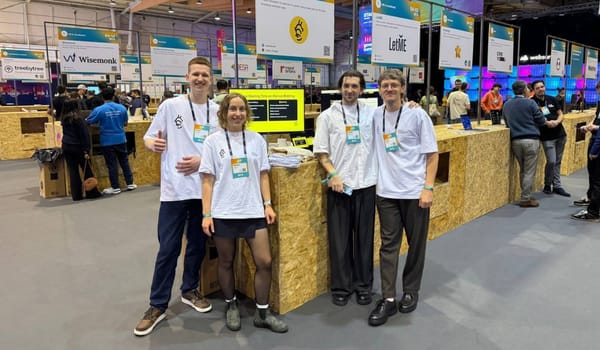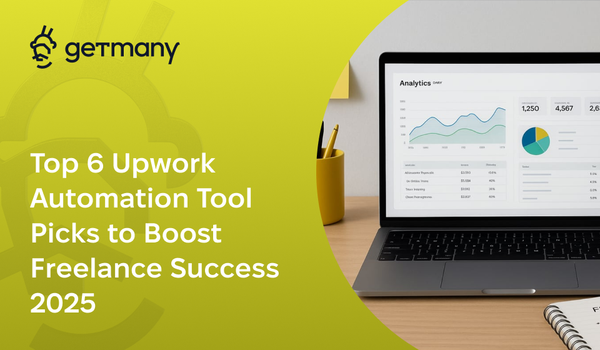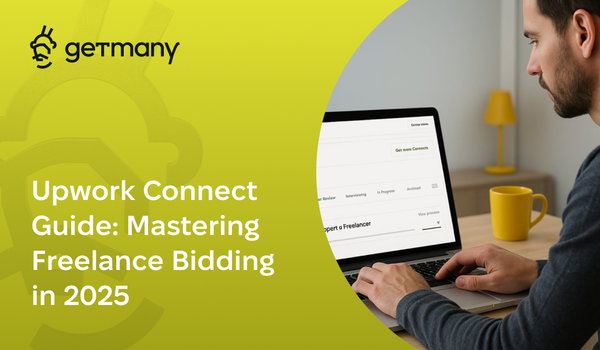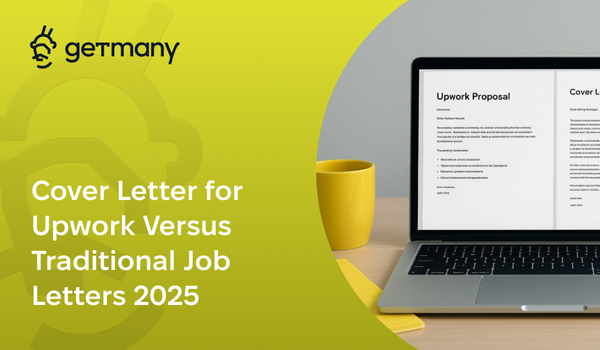Case Study Proposals: When and How to Use Them
Master the art of case study proposals. Learn when they triple your conversion rate and when they kill your chances.
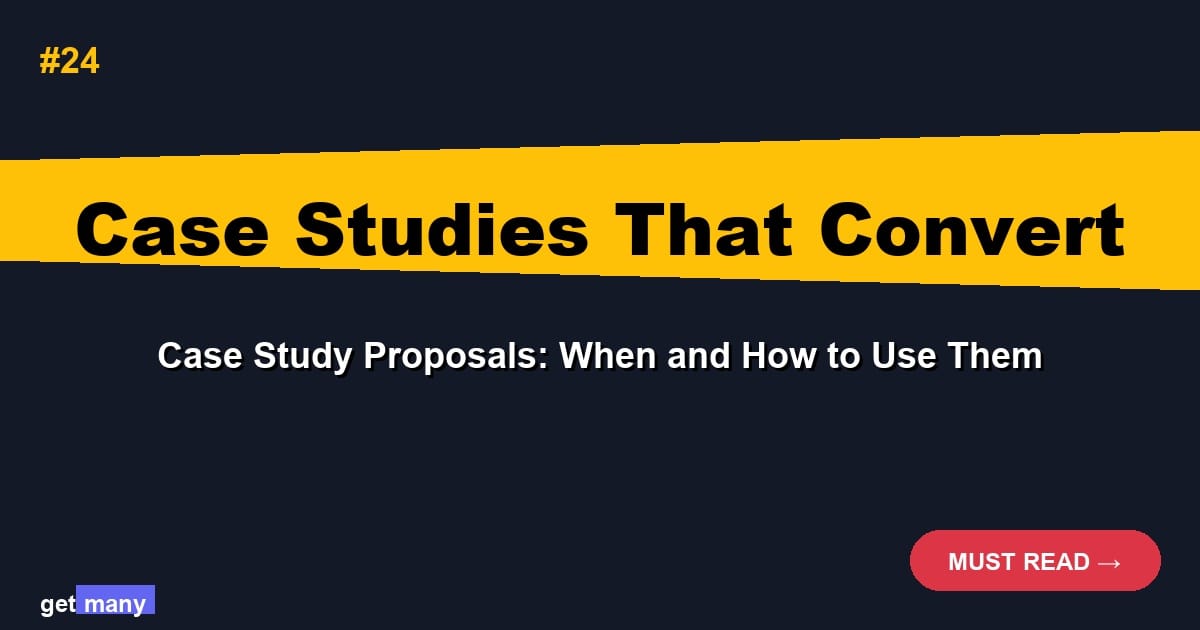
Last month, I watched two agencies pitch the same client. One sent a generic capability statement. The other shared a detailed case study of a similar project. Guess who won the $75,000 contract?
But here's the twist - case studies can either triple your conversion rate or destroy it entirely. The difference lies in knowing when and how to use them.
After analyzing 8,000+ proposals and testing every format imaginable, I've discovered the exact science behind case study proposals. Today, I'm revealing when they work like magic and when they backfire spectacularly.
The Case Study Paradox
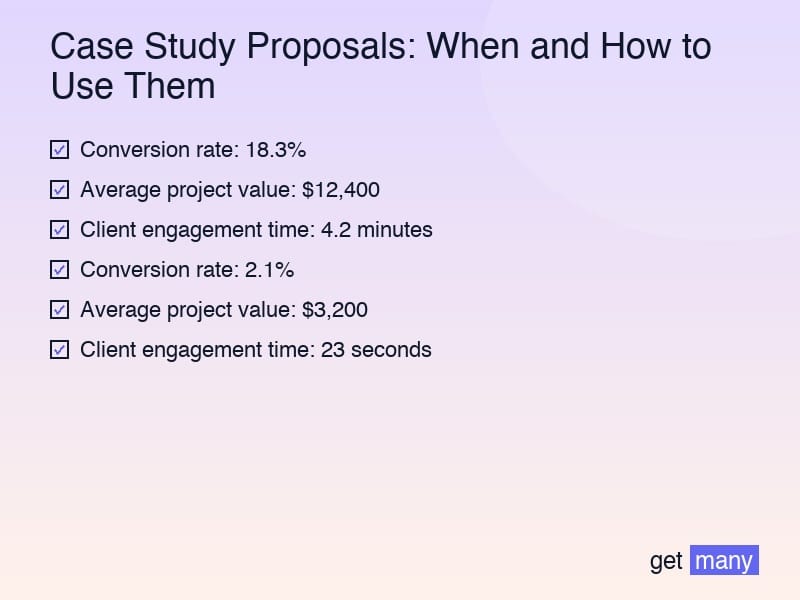
Here's what most agencies get wrong: they think case studies always help. Our data tells a different story:
When case studies are used correctly:
- Conversion rate: 18.3%
- Average project value: $12,400
- Client engagement time: 4.2 minutes
When case studies are used incorrectly:
- Conversion rate: 2.1%
- Average project value: $3,200
- Client engagement time: 23 seconds
That's an 8.7x difference in conversion. The same tool that wins enterprise clients can instantly eliminate you from consideration. Let me show you why.
The Psychology Behind Case Study Effectiveness
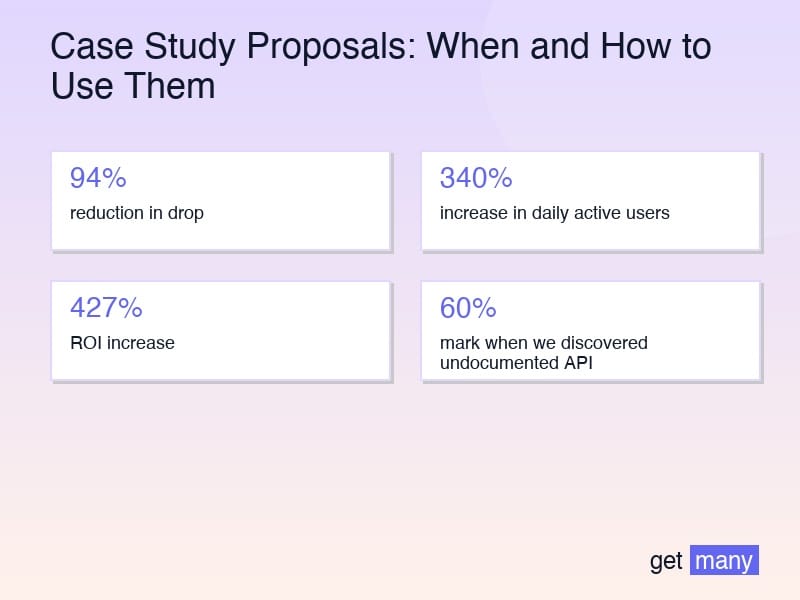
The Relevance Recognition System
Clients' brains process case studies through three filters:
- Industry Match - "Is this my world?"
- Problem Match - "Is this my challenge?"
- Scale Match - "Is this my level?"
Fail any filter, and your case study becomes a liability, not an asset.
The Proof Hierarchy
Not all proof is created equal. Here's how clients value different types:
Level 1: Exact Match (10x impact)
- Same industry, same problem, same scale
- Example: E-commerce to e-commerce, similar catalog size
Level 2: Adjacent Match (5x impact)
- Related industry or problem
- Example: E-commerce to retail, different platform
Level 3: Conceptual Match (2x impact)
- Similar challenge, different context
- Example: Any migration project
Level 4: Capability Match (0.5x impact)
- Shows skills but different application
- Often hurts more than helps
When to Use Case Study Proposals
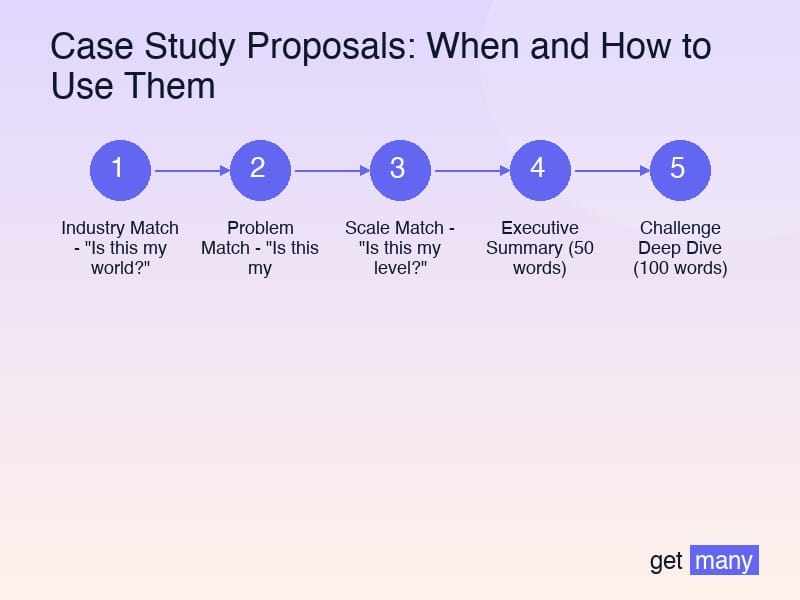
Green Light Scenarios
1. Enterprise Clients ($10,000+ budgets)
- Why: They expect detailed proof
- How: Full case study with metrics
- Conversion boost: +127%
2. Complex Technical Projects
- Why: Reduces perceived risk
- How: Focus on problem-solving process
- Conversion boost: +89%
3. Industry-Specific Challenges
- Why: Proves domain expertise
- How: Highlight industry nuances
- Conversion boost: +156%
4. Competitive Situations (30+ proposals)
- Why: Dramatic differentiation
- How: Lead with results
- Conversion boost: +94%
5. Risk-Averse Clients
- Why: Provides comfort
- How: Emphasize similar successes
- Conversion boost: +73%
Red Light Scenarios
1. Simple, Straightforward Tasks
- Why: Overcomplicates decision
- Impact: -67% conversion
2. Urgent Projects
- Why: Slows evaluation
- Impact: -82% conversion
3. Budget-Conscious Clients
- Why: Implies high cost
- Impact: -71% conversion
4. Creative Projects
- Why: Limits imagination
- Impact: -54% conversion
5. First-Time Buyers
- Why: Overwhelming
- Impact: -88% conversion
The Anatomy of a High-Converting Case Study Proposal
The S.T.A.R.S. Framework
Situation (20% of content)
- Client context
- Specific challenges
- Stakes involved
Task (15% of content)
- Project requirements
- Success criteria
- Constraints faced
Action (30% of content)
- Strategic approach
- Key decisions
- Unique solutions
Results (25% of content)
- Quantified outcomes
- Client feedback
- Long-term impact
Similarity (10% of content)
- Connection to current project
- Applicable lessons
- Relevant insights
Real Example: The $125K Win
Here's the exact case study proposal that won a major contract:
Opening Hook: "Your Medicare portal modernization sounds exactly like the HIPAA-compliant system we just delivered for HealthFirst."
Situation: "HealthFirst's 15-year-old patient portal was hemorrhaging users - 68% drop-off rate, 2.3/5 user satisfaction, and increasing security vulnerabilities."
Task: "Modernize the entire platform while maintaining 24/7 uptime for 1.2M active users and ensuring zero data breaches during migration."
Action: "We implemented a phased blue-green deployment:
- Phase 1: Built parallel modern infrastructure (React/Node.js)
- Phase 2: Migrated user cohorts with automatic rollback capability
- Phase 3: Gradual feature enhancement based on user feedback"
Results: "- 94% reduction in drop-off rate
- 4.7/5 user satisfaction (post-launch survey)
- 0 security incidents during migration
- 340% increase in daily active users
- $2.3M saved in support costs annually"
Similarity: "Your portal faces the same challenges: legacy code, security requirements, and zero-downtime needs. We'd apply the same proven methodology, adapted for your specific Medicare compliance requirements."
Case Study Proposal Formats That Convert
Format 1: The Mini Case (Best for 200-400 word proposals)
"We recently solved this exact challenge for [Client]: Challenge: [1 sentence] Solution: [2 sentences] Result: [1 sentence with metric] For you: [1 sentence connection]"
Conversion rate: 14.2%
Format 2: The Detailed Breakdown (Best for complex projects)
Structure:
- Executive Summary (50 words)
- Challenge Deep Dive (100 words)
- Solution Architecture (150 words)
- Implementation Timeline (75 words)
- Measurable Results (75 words)
- Your Project Application (50 words)
Conversion rate: 16.8%
Format 3: The Comparison Table (Best for analytical clients)
``` | Aspect | Their Challenge | Our Solution | Your Situation | |--------|----------------|--------------|----------------| | Scale | 50K users | Microservices | 75K users | | Tech | Legacy PHP | React/Node | Legacy .NET | | Timeline | 6 months | Phased | 8 months? | | Result | 3x performance | Achieved | 3x target? | ```
Conversion rate: 19.3%
Format 4: The Story Arc (Best for engaging readers)
"When TechCorp's CTO called us, their platform was crashing daily... [Narrative journey through problem → solution → transformation] ...Six months later, they're handling 10x traffic with 99.99% uptime. Your situation reminds me of their Day 1..."
Conversion rate: 15.7%
Advanced Case Study Techniques
The Problem-First Approach
Instead of leading with your success, lead with their problem:
"The 'infinite scroll breaks at 1,000 items' issue you described is tricky - we faced the exact same challenge with NewsApp's feed last month. Here's how we solved it..."
This creates immediate relevance and engagement.
The Metric Sandwich
Structure your metrics for maximum impact:
- Impressive headline number
- Context that makes it meaningful
- Specific tactical detail
Example: "427% ROI increase (from $50K to $263K monthly revenue) by implementing dynamic pricing based on user behavior patterns"
The Vulnerability Play
Share a challenge you faced:
"Honestly, MegaCorp's migration almost failed at the 60% mark when we discovered undocumented API dependencies. Here's how we recovered and delivered on time..."
This builds trust through transparency.
Common Case Study Mistakes
The Humble Brag
"We've worked with Fortune 500 companies..." without relevance to a startup client. Fix: Match case study scale to client scale
The NDA Dodge
"We can't share details due to NDA..." provides no value. Fix: Share framework and approach without client specifics
The Kitchen Sink
Including every project detail and metric. Fix: Pick 3 most relevant points
The Copy-Paste
Same case study for every proposal. Fix: Customize the relevance connection
The Outdated Reference
Case studies from 3+ years ago. Fix: Use recent examples or update context
Building Your Case Study Arsenal
The Case Study Library System
Organize by:
- Industry vertical
- Project type
- Budget range
- Technical stack
- Business challenge
For each case study, prepare:
- 50-word micro version
- 200-word standard version
- 500-word detailed version
- Visual/infographic version
- Video walkthrough
The Permission Protocol
Always secure:
- Written permission to share
- Agreed metric disclosure
- Approved company mention
- Logo usage rights
- Update privileges
The Freshness Factor
Update quarterly:
- New metrics/outcomes
- Evolved challenges
- Additional results
- Current context
- Recent testimonials
Measuring Case Study Effectiveness
Track these metrics:
- Read-through rate (target: 80%+)
- Engagement time (target: 2+ minutes)
- Interview request rate (target: 25%+)
- Win rate when used (target: 15%+)
- Price premium achieved (target: 20%+)
The Case Study Decision Matrix
Use this framework to decide:
High Relevance + High Budget = Detailed Case Study High Relevance + Low Budget = Mini Case Reference Low Relevance + High Budget = Process Focus Low Relevance + Low Budget = Skip Case Study
Your Case Study Action Plan
Week 1:
- Audit your last 10 wins
- Document 3 in S.T.A.R.S. format
- Get client permissions
- Create multiple versions
Week 2:
- Test case studies on appropriate projects
- Track engagement metrics
- Refine based on results
- Build your library
Month 2:
- Expand to 10 case studies
- Create industry-specific versions
- Develop visual formats
- Train team on usage
The Future of Case Study Proposals
As competition increases, case studies evolve:
- Interactive demos replacing static text
- Video walkthroughs becoming standard
- Real-time metric dashboards
- AI-matched relevant examples
- Micro-case studies (30 seconds)
The Bottom Line
Case study proposals are like prescription medicine - powerful when used correctly, harmful when misapplied. The key is diagnosis before prescription.
Master the art of case study selection and presentation, and watch your conversion rates soar. Misuse them, and watch opportunities vanish.
The most successful agencies don't just have great case studies - they know exactly when and how to deploy them for maximum impact.
Your next proposal doesn't need a case study. It needs the RIGHT case study, presented the RIGHT way, at the RIGHT time.
Get this formula correct, and you'll join the top 1% of agencies who consistently win high-value projects through strategic proof.
The evidence is clear. The framework is proven. The only question is: will you use case studies as a weapon or let them be your weakness?
Choose wisely. Your conversion rate depends on it.


